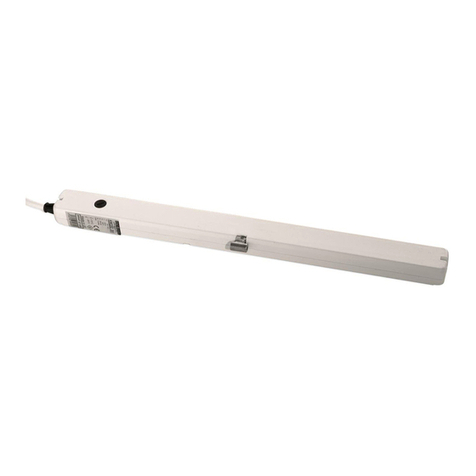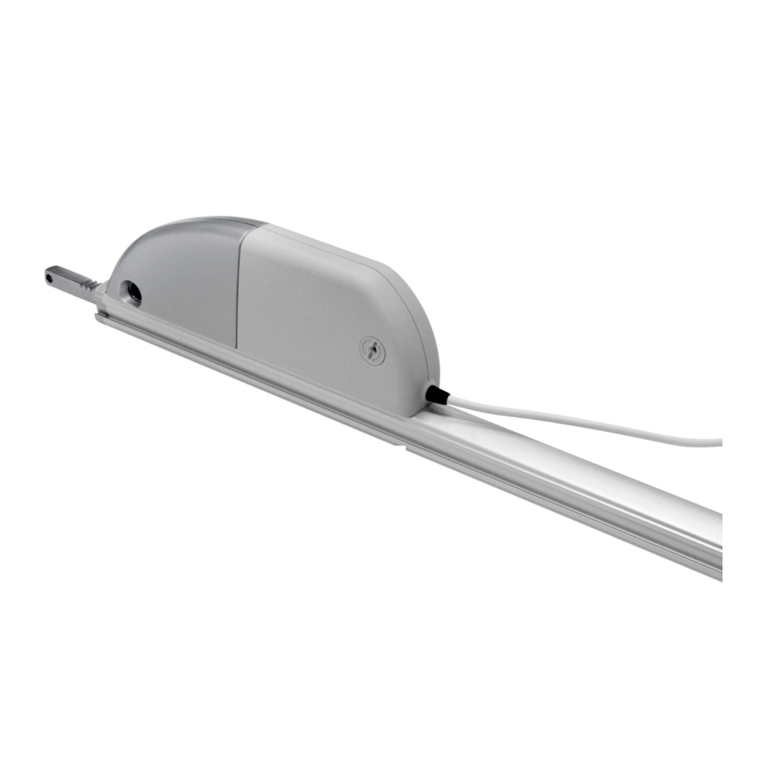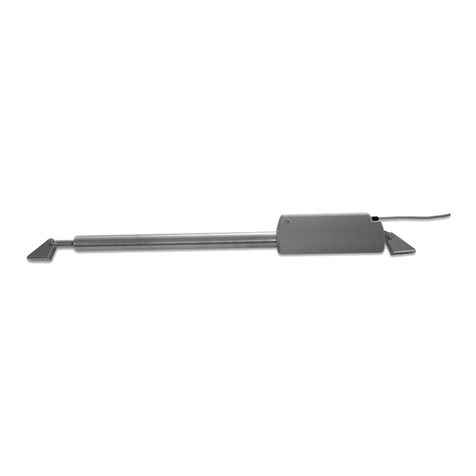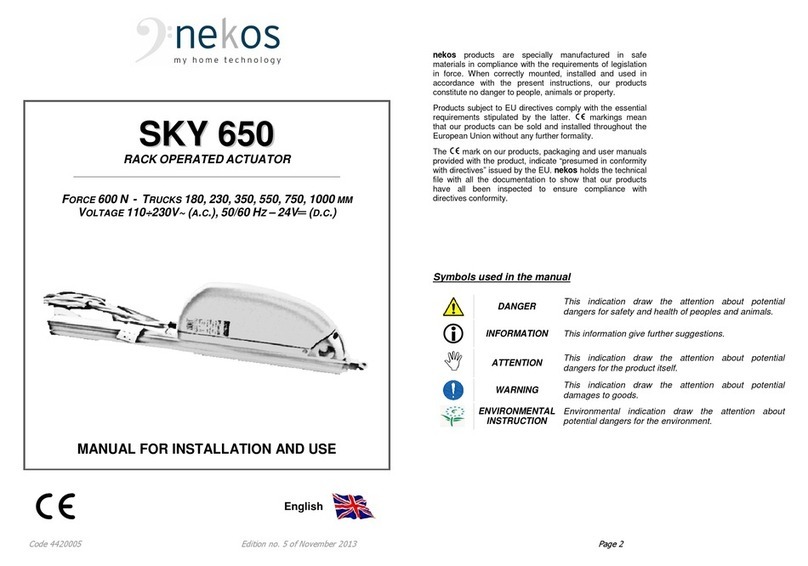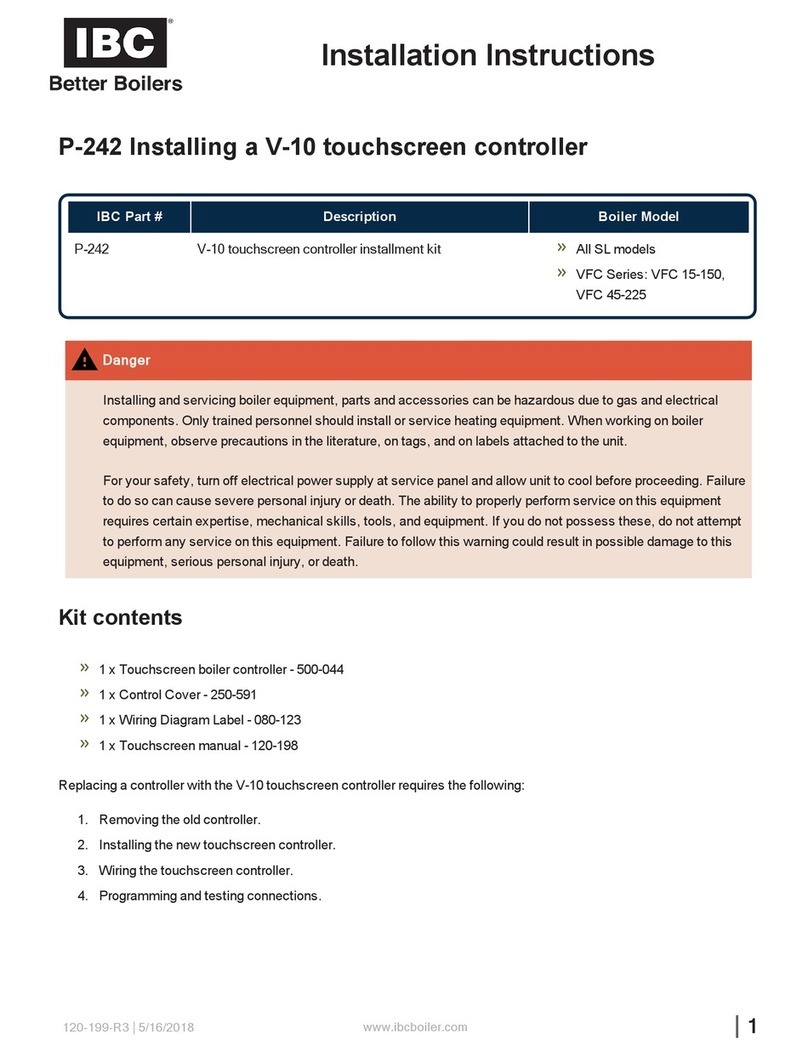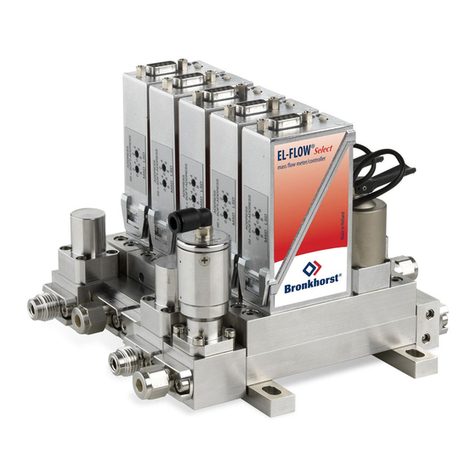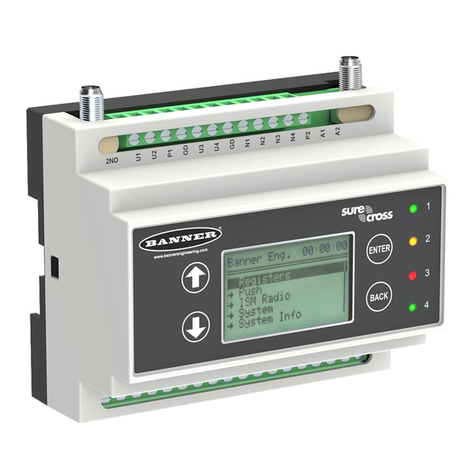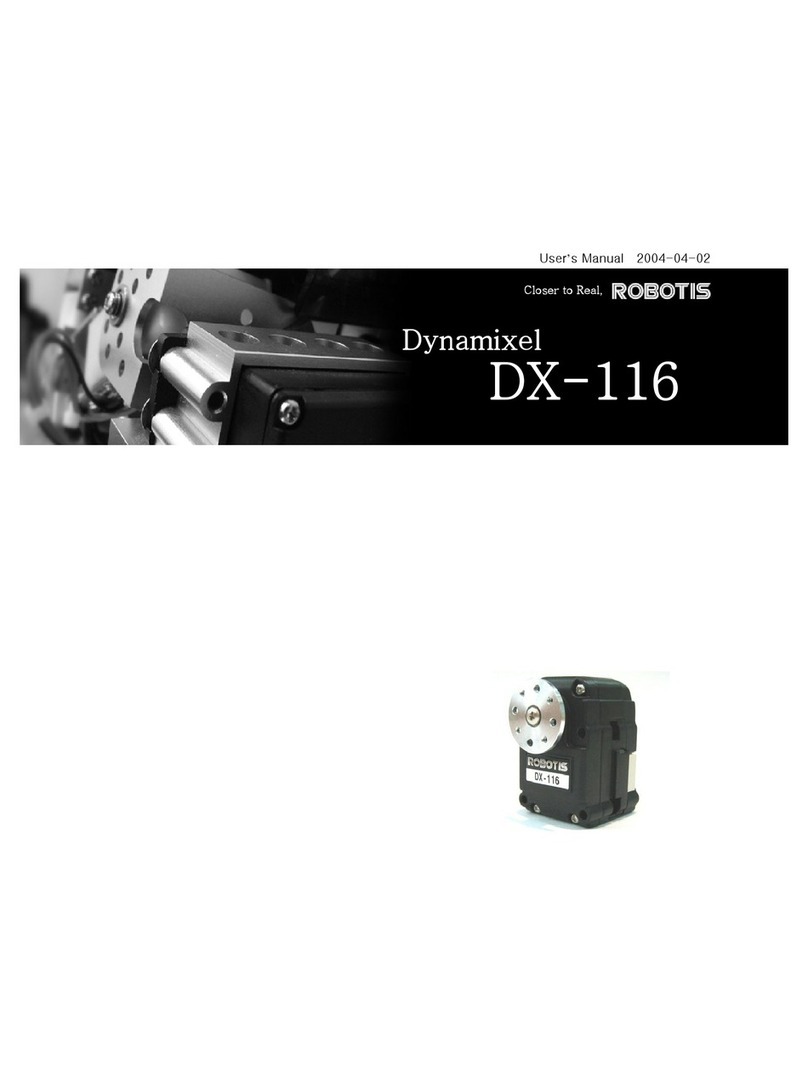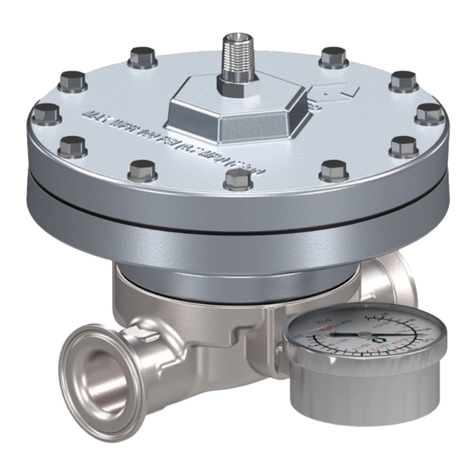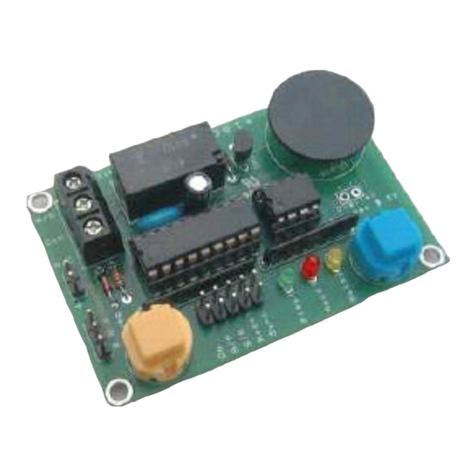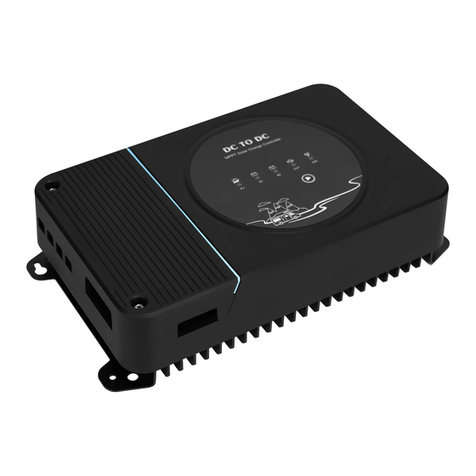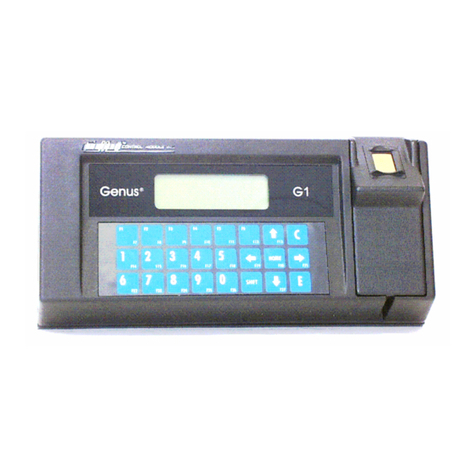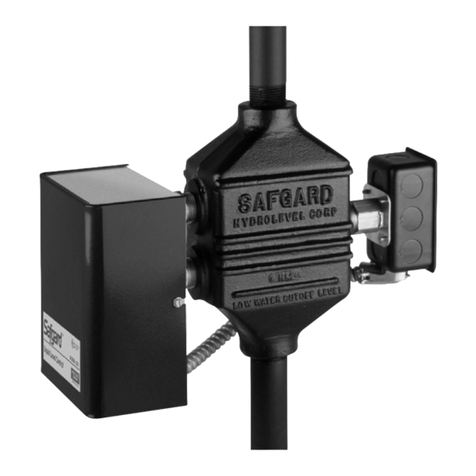nekos SKY 450 User manual

4420044 - Rev 1805
SKY 450
INSTRUCTION MANUAL
RACK ACTUATOR
Force 450N – Strokes 180, 230, 350, 550, 750, 1000 mm
Electrical feeding 110-230V~ 50/60Hz
NEKOS S.r.l. - Via Capitoni, 7/5 - 36064 Mason Vicentino (VI) – ITALY
EN
2
USER INSTRUCTIONS
CAUTION. Carefully observe all the following installation
instructions to ensure personal safety.
The device is not intended for use by persons (including children)
with reduced physical, sensory or mental capabilities, or lacking
experience and knowledge. Do not allow children to play with the
fixed controls and keep any remote-control units out of their reach.
Have installation checks performed periodically by qualified
personnel from a service centre authorised by the manufacturer. Do
not use if repair or adjustment is required.
CAUTION: if the power cable is damaged, it must be replaced by
qualified personnel from a service centre authorised by the
manufacturer.
CAUTION. Disconnect the power supply during cleaning or
maintenance operations. Do not use solvents or jets of water to
wash the appliance; the appliance should not be submerged in
water.
In the event of fault or malfunction, switch off the device at the main
switch. All repairs and adjustments (e.g. setting the stroke) must
only be performed by qualified personnel from a service centre
authorised by the manufacturer.
Always request exclusive use of original spare parts. Failure to
respect this condition could compromise safety and invalidate the
benefits contained in the warranty for the appliance. In the event of
any problems or queries, consult your agent or contact the
manufacturer directly.
The A-weighted sound pressure level is less than 70dB(A).
Carefully preserve these instructions after installation.

3
INSTALLER INSTRUCTIONS
nekos products have been manufactured in accordance with safety standards and conforms to the
stipulations of current standards in force.
When correctly assembled, installed and used according to the present instructions, they will not
generate any danger for persons, animals or items.
Symbols used in the manual
DANGER This indication draw the attention about potential dangers for safety and
health of peoples and animals.
Contents
1. Safety indications ....................................................................................................... 4
2. Formulas and recommendations for installation ....................................................... 5
2.1. Calculation of opening / closure force................................................................ 5
2.2. Maximum opening in accordance with sash height ........................................... 5
3. Technical information about function ......................................................................... 6
4. Technical data ............................................................................................................ 6
5. Id plate and marking data .......................................................................................... 6
6. Construction and standards ....................................................................................... 7
7. Electrical power supply .............................................................................................. 7
8. Instructions for assembly ........................................................................................... 8
8.1. Preparation of actuator for assembly .................................................................... 8
8.2. Assembly for top hung windows opening outwards ............................................. 8
8.3. Assembly on light domes or dormer windows ...................................................... 9
8.4. Assembly with bottom hung windows ................................................................... 9
8.5. Assembly on louvre windows without mechanical lock or on sunshades ............. 10
8.6. Assembly in tandem with connection bar ........................................................... 11
9. Electrical connections .............................................................................................. 12
10. Stroke-end................................................................................................................ 12
10.1. Stroke-end at opening and closure ..................................................................... 12
10.2. Stroke adjustment where required ...................................................................... 12
11. Checking for correct assembly ................................................................................. 13
12. Emergency manoeuvres, maintenance and cleaning .............................................. 13
13. Environmental protection ......................................................................................... 13
14. Certificate of guarantee ............................................................................................ 14
15. Declaration of conformity ......................................................................................... 15
4
1. Security rules
C
AREFULLY OBSERVE ALL THE FOLLOWING INSTALLATION INSTRUCTIONS TO
ENSURE PERSONAL SAFETY. IMPROPER INSTALLATION CAN SERIOUSLY ENDANGER
SAFETY.
MANDATORY RISK ANALYSIS AND PROTECTION MEASURES.
The Nekos electrical actuators comply with the Machinery Directive (2006/42/EC),
Standard IEC 60335-2-103 (Particular requirements for drives for gates, doors and
windows) and other directives and regulations indicated in the attached Declarations of
Incorporation and CE Conformity (at the end of the manual). According to the Machinery
Directive, actuators are “partly completed machinery” intended for incorporation into doors
and windows. The manufacturer/supplier of the window is required, with exclusive
responsibility, to ensure the compliance of the entire system with the applicable standards
and to issue CE certification. We strongly discourage any use of the actuators other than
that specified and therefore, in any case, the supplier of the complete system retains full
liability.
For systems installed at a height of less than 2.5 m above floor level or other levels
accessible to users, the manufacturer/supplier of the window must conduct risk analysis
regarding potential harm (violent blows, crushing, wounds) caused to people by normal
use or possible malfunction or accidental breakage of the automated windows, and to
implement suitable protective measures in view of these. Such measures include those
recommended by the specified standard:
- controlling the actuators via a “deadman’s button” placed near the system and within
the operator’s field of view, to ensure that people are out of the way during operation.
The button must be placed at a height of 1.5 m and operated by key if accessible to
the public; or:
- use of contact safety systems (also included in the actuators) that ensure a maximum
closing force of 400/150/25 N, measured in accordance with paragraph BB.20.107.2
of IEC 60335-2-103; or:
- use of non-contact safety systems (lasers, light grids); or:
- use of fixed safety barriers that prevent access to moving parts.
Automated windows are deemed adequately protected if they:
- are installed at a height of >2.5 m; or:
- have a leading-edge opening of <200 mm and a closing speed of <15 mm/s; or:
- are part of a smoke and heat evacuation system for emergency use only.
In any case, moving parts of windows that could fall below 2.5 m following breakage of a
system component need to be fixed or secured in order to prevent them from suddenly
falling or collapsing: e.g. the use of safety arms on bottom-hung windows.
The device is not intended for use by persons (including children) with reduced
physical, sensory or mental capabilities, or lacking experience and knowledge.
Do not allow children to play with the fixed controls and keep any remote-control
units out of their reach.
The actuator is destined exclusively for installation indoors. For any special
application we recommend you consult the manufacturer beforehand.
After removing packaging, check for any damage on the appliance.
Always request exclusive use of original spare parts. Failure to respect this

5
condition could compromise safety and invalidate the benefits contained in the
warranty for the appliance.
In the event of any problems or queries, consult your agent or contact the
manufacturer directly.
2. Formulas and recommendations for installation
2.1. Calculation of opening / closure force
Using the formulas on this page, approximate calculations can be made for the force
required to open or close the window considering all the factors that determine the
calculation.
Symbols used for the calculation
F (Kg) = Force for opening or closing P (Kg) = Weight of the window (mobile sash only)
C (cm) = Opening stroke (actuator stroke) H (cm) = Height of the mobile sash
For horizontal light domes or skylights
F = 0,54 x P
(Eventual weight of snow or wind on the
cupola should be calculated separately).
For vertical windows
TOP HUNG WINDOWS, OUTWARD OPENING (A)
BOTTOM HUNG WINDOWS (B)
F = 0,54 x P x C : H
(Eventual load of favourable or unfavourable
wind on the sash should be calculated
separately.)
2.2. Maximum opening in accordance with sash height
The actuator stroke should be selected in accordance with the height of the sash and
its application. Make sure that the actuator does not touch the profile of the sash when
moving along its track, and ensure there are no obstacles blocking the opening and that
the rack moves smoothly along the window frame.
ATTENTION. For safety reasons, always check application before fixing the actuator to
the frame or sash. In the event of difficulty, request assistance from the manufacturer to
check application.
6
3. Technical information about function
The rack actuator performs opening and closing movements for the window using a
round section steel rack. Movement is powered by electricity that feeds a reduction
motor controlled by an electronic board.
The opening stroke for the window CANNOT be programmed as it is regulated by the
length of the rod on the reduction motor. The electronic control device allows the rack to
protrude until it encounters an obstacle that blocks its stroke. This could be provided by
the internal lock on the rack or complete closing/opening of the window.
In both outwards and return directions the stroke-end uses a self-defining electronic
process with power absorption, and for this reason, no adjustment is required.
4. Technical data
Model
SKY
450
Thrust and traction force (F
N
) 450 N
Course lengths (S
V
) 180, 230, 350, 550, 750, 1000 mm (*)
Input voltage (U
N
) 110-230V~ 50/60 Hz
Current absorption at nominal load (I
N
) 0,28 A - 0,19 A
Power absorption at nominal load (P
N
) 21,6 – 24 W
Travel speed without load 6,7 mm/s
Length of run without load In accordance with length of truck run
Electrical insulation Class II
Type of service (D
R
) 2 cycles
Max. and min. temperatures for function -5 +65 ºC
Degree of protection for electrical devices IP44
Adjustment of socket at casing Position self regulating
Connection in parallel of two or more motors Yes
Connection in tandem or in series Yes
Holding nominal force (it can vary according
to the chosen brackets)
2200 N
Limit switch stop at opening and closure At absorption of power
Protection against overload at opening and
closure
At absorption of power
Feeding cable length 1 m
Dimensions 103x47x(Course length+135) mm
Weight Varies according to construction
Information presented in these illustrations is not binding and is also subject to variation without prior notice.
(*) Technical personnel can shorten track runs by adjusting the internal limit switches.
5. Id plate and marking data
The SKY450 actuators have CE marking and comply with the Standards listed in the
Declaration of Conformity. They also come with a Declaration of Incorporation, due to
their classification by the Machinery Directive as “partly completed machines”. Both
declarations are included in the final pages of this manual.

7
The plate data is displayed on an adhesive label placed on the outside of the casing,
which must remain intact and visible.
The main information it displays includes: manufacturer's address, product name -
model number, technical characteristics, production date and serial number. In the
event of a complaint, please indicate the serial number (SN) displayed on the label.
An explanation of the symbols used on the label to abbreviate the technical
characteristics is given in the table in the chapter on “TECHNICAL DATA”.
6. Construction and standards
INTENDED USE. The SKY450 rack actuator has been designed and
manufactured to open and close top hung windows opening outwards, bottom
hung windows, dormer windows, light domes and skylights. Specific use is for
ventilation and airing of areas; any other use is strongly discouraged, with the
supplier of the entire system in any case retaining sole liability.
The actuator is manufactured in accordance with the Directives and following
Regulations listed in the attached Declaration of Incorporation and Conformity .
Electrical connections must conform to regulations in force for the design and
set up of electrical equipment.
To ensure efficient separation from the grid, an approved type of bipolar “dead-man”
switch should be used. An omnipolar general power switch with minimum distance
of 3 mm between contacts should be installed upstream of the control line.
Application is performed using the brackets provided and any other type of
assembly should be checked with the manufacturer, who will not accept any
responsibility for incorrect or malfunctioning assembly.
The actuator comes packaged in a cardboard container which contains two pieces.
Each package contains:
Nr. 2 110-230V~ 50/60Hz electrical actuators
Nr. 2 Standard support brackets with respective grips and fixing screws.
(Grips and fixing screws are inside small part packaging).
Nr. 2 Brackets for fixing to the frame.
Nr. 2 Small part packaging.
Nr. 1 Instruction manual.
7. Electrical power supply
SKY450 is commercially available in one single version:
SKY450 230V: runs on grid tension of 110-230V~ 50/60Hz, with a three wire cable
(LIGHT BLUE, common neutral; BLACK, phase open; BROWN, phase closed).
8
8. Instructions for assembly
These indications are for specialised technical personnel and basic work and
safety techniques are not indicated.
All preparatory, assembly and electrical connection operations must be performed by
specialised technical personnel to guarantee optimal function and service of the
actuator. Check that the following fundamental conditions have been met:
Before installing the actuator, check that the moving parts of the window on
which it is to be installed are in perfect working condition and that they open
and close properly and are well balanced (where applicable).
Gear motor performances must be sufficient to move the window; any limits
indicated in the technical data table on the product cannot be exceeded (page
6). Any eventual calculations may be made using the formula on page 5 of this
manual.
Warning: Check that appliance has electrical feeding type equal to the one
provided by checking with the data reported on the label attached to the gear
motor.
Check that the actuator has not been damaged during transport, first visually
and then by working it in both directions.
Transom window frames entail the risk of injury caused by accidental fall of the
window. A compass limit switch or alternative safety system suitably designed
to prevent any accidental falls should be installed.
8.1. Preparation of actuator for assembly
Before starting assembly of the actuator, prepare the following material for completion,
equipments and tools.
For fixing onto metal window frames: M5 threaded inserts (6 pieces), M5x12 flat
headed metric screws (6 pieces).
For fixing onto wooden window frames: self threading screws for wood Ø4.5 (6
pieces).
For fixing onto PVC window frames: self threading screws for metal Ø4.8 (6
pieces).
Equipment and tools: measuring tape, pencil, drill/screwdriver, set of drill heads for
metal, insert for screwing in, electricians pliers, screwdrivers.
8.2. Assembly for top hung windows opening outwards
A. Pencil in the middle line for the window frame on both
mobile and fixed parts (Fig. 1).
B. Place the motor support bracket in position at the edge of
the fixed part in line with the centre line pencilled in earlier
and pencil in the four openings to be used for fixing (Fig. 2).
C. Use the appropriate drill head to perforate the window
frame and assemble the motor support bracket, taking
care to tighten all screws well (Fig. 3 and Fig. 3bis).
Fig. 1

9
D. Place the front rod in line with the centre line of the mobile
part of the window frame and trace out the three fixing
openings (Fig. 4).
E. Use the appropriate drill head for perforation and
assemble the front bracket, taking care to tighten all
screws well (Fig.5 and Fig. 5bis).
F. Take the clamp screws and assemble them onto the motor
support bracket. Leave at least two turns of leeway.
G. Slide the swallow tailed profile of the actuator onto the
clamp screws, and check they have been inserted
correctly into the socket of the profile to ensure the
actuator runs smoothly along its axis.
H. Position the actuator so the eyebolt head is inserted into
the front bracket. Insert the M6x25 screw into the bracket
and eyebolt and fix the self-locking nut into position using
two 10 keys.
I. Manually move the actuator along its axis to close the
window and press firmly against the seals. Tighten the
clamp screws previously only placed and set the actuator in
line with the window frame. Suggested tightening torque is
5÷7 Nm.
J. The actuator may now be powered up for a complete trial
of opening and closing of the window. After closure, make
sure that the window is completely closed and check the
pressure on all seals.
Fig. 2
Fig. 3
Fig. 3 bis
K. The stroke-end for the actuator is automatic. The appliance exerts a traction force
which guarantees perfect pressure on seals even for windows with large
dimensions.
8.3. Assembly on light domes or dormer windows
First, check the actuator has been applied correctly and check positioning of the
brackets on both frame and sash.
(Follow the instructions set out in “Assembly for outward opening windows”).
8.4. Assembly with bottom hung windows
A. Pencil in the centre line for the window on both mobile and
fixed parts (Fig. 1).
B. Position the motor support bracket at the edge of the
frame of the mobile part in line with the centre line and
trace in the four openings to be used for fixing (Fig. 2).
C. Use an appropriately dimensioned drill head to perforate
the window frame and assemble the motor support
bracket, taking care to fix the screws securely into position
(Fig. 3 and Fig. 3bis).
D. Position the front bracket in line with the centre line on the
Fig. 4
10
Fig. 7
fixed part of the frame and trace in the three openings for
fixing (Fig. 4).
E. Use an appropriate size of drill head for perforation and
assemble the front bracket, taking care to fix the screws
securely into position (Fig. 5 and Fig. 5bis).
F. Take the clamp screws and assemble them onto the motor
support bracket. Leave at least two turns of leeway.
G. Insert the swallow tailed profile of the actuator onto the
clamp screws, taking care to insert correctly into the
socket of the profile to ensure the actuator runs smoothly
along its track.
H. Position the actuator so the eyebolt head is inserted into
the front bracket. Insert the M6x25 screw into the bracket
and eyebolt and fix the self-locking nut into position with
two fixed 10 keys.
Fig. 5
Fig. 5 bis
I. Manually move the actuator along its axis to close the window and press firmly
against the seals. Tighten the clamp screws previously only placed and set the
actuator in line with the window frame. Suggested tightening torque is 5÷7 Nm.
J. The actuator can now be powered up for a complete trial of opening and closing
the window. After closing, check the window is completely shut and check
pressure on the seals.
K. The stroke-end of the actuator is automatic. The appliance exerts a traction force
to guarantee perfect pressure against the seals even for large dimension windows.
8.5. Assembly on louvre windows without mechanical lock or on sunshades
To perform this assembly, the actuator must be powered electrically. Check the
technical data label on the motor for the appropriate form of electricity.
A. Connect the actuator to the power supply and activate so the rod protrudes until
the maximum opening stroke-end steps in.
B. Set the louvres to closed position by manually adjusting the casement levers.
C. Position the eyebolt head of the actuator in the middle of the two levers (or in line
with the lever opening where there is only one lever), insert the pin and lock into
position using the nuts.
D. Take the clamp screws and assemble them onto the motor support bracket, taking
care not to screw them into their final position.
E. Assemble the motor support bracket onto the profile of the
actuator, inserting the clamp screws correctly into the socket
of the profile and positioning it into the tail of the actuator
(Fig. 7).
F. Keep the louvres or sunshades closed, position the bracket
against the vertical side of the window, ensuring that the axis
of the actuator is parallel to the lever and perpendicular to
the connecting pin, with the bracket in the tail of the actuator.
G. Trace in the four fixing openings for the motor support
bracket.

11
H. Use an appropriate size of drill head for perforation, insert the screws and fix the
motor support bracket to the casement.
I. Tighten the clamp screws. Suggested tightening torque is 5÷7 Nm.
J. The actuator can now be powered up for a complete trial of opening and closing
procedures.
8.6. Assembly in tandem with connection bar (1 – actuator, 2 – bar, 3 – rod)
SKY450 actuators can be connected in tandem with a
mechanical connection bar. Two pressure points can be
obtained using one single motor.
The movement of the motorised actuator (1) is connected
to the rod (3) (no motor) mechanically for the window to
move evenly at a steady speed.
The illustration to the side indicates the layout and inter-
axes that should be used during assembly. The length of
the connection bar (2) is expressed by “D” (Interaxis for
actuators) + 5 mm.
INTERAXES FOR CONNECTION BARS
Code Description Bar length
(mm)
“
D
” (± 1.5 mm)
Interaxis for actuators
(mm)
4010009 Connection bar 1000 mm 1.035 1.030
4010010 Connection bar 1500 mm 1.535 1.530
For assembly, proceed as follows:
A. Trace the interaxis for assembly for the two actuators onto the frame according to
the dimensions in the above table.
B. Position and assemble the support frames for the actuator (see detailed explanation
in the paragraph entitled “assembly for top hung windows opening outwards”).
C. Position the brackets onto the sash, trace in the points for the openings, perforate
the window frame and assemble the brackets onto the sash.
D. Assemble the motorised actuator (1), inserting the clamp screws slightly into the
profile and lightly fix the screws into position. Check the rack is in “stroke-end return”
(rack in full return position) position.
E. Take the rod (3) in one hand and use the other hand to insert the connection bar
into the opening provided (2). Insert the other end of the connection bar into the
opening on the motorised actuator (1).
F. Assemble the rod (3), inserting the clamp screws slightly into the profile and lightly
fix the screws into position. Check the rack is aligned with that of the motorised
actuator.
G. Loosen the clamp screws and place the eyebolt heads into the brackets assembled
onto the sash. At each point, insert the M6x25 screw into both bracket and eyebolt
and fix the nut in position using two 10 mm keys.
12
H. Manually move the actuator along its axis to close the window correctly and firmly
against the seals. Tighten the clamp screws right in and align the actuator with the
casement.
I. The actuator can then be powered up for a complete trial of opening and closure.
After closure is complete, check that the window is completely shut and check
pressure on the seals.
J. The stroke-end of the actuator is automatic. The appliance exerts a traction force to
ensure perfect pressure against seals even for large dimension windows.
9. Electrical connections
Appliances are equipped with cable
manufactured in accordance with
safety standards and protection
against radio disturbances. It is three
wired BLUE (SHARED), BLACK (OPENS),
BROWN (CLOSES), and is 1 m (±5%)
long. After connecting the electricity
supply to the control button (bipolar
with arrows if possible), check that
the up key function opens the
window frame and the and down key
function closes it.
In the event of incorrect function,
invert the two wires marked BLACK
and BROWN.
For harness, please follow the
diagram by the side.
10. Stroke-end
10.1. Stroke-end at opening and closure
The stroke-end at opening and closure is automatic, electronic and cannot be
programmed. The actuator is stopped by the absorption of power encountered when
the window is completely open or completely closed.
10.2. Stroke adjustment where required
Strokes shorter than the stroke produced during manufacture can be created at will to
suit the protrusion length of the rod.
This operation should be performed on the bench using the appropriate equipment by
qualified technical personnel with the ability to perform each operation with maximum
diligence and safety.
Work phases are as follows:
1
0
0
-
2
4
0
V~ 50/60Hz

13
1. Remove the four screws on the front head of the actuator.
2. Remove the body of the actuator and the rack from the rod.
3. Unscrew the two screws locking the two limit switch block pieces.
4. Move the rubber stopper and block to the required position.
5. Screw the two screws used for fixing the block into position back in again.
6. Reassemble everything onto the actuator rod.
7. Screw in the four screws on the front head and check the settings for the new track
run.
11. Checking for correct assembly
Check that the frame has closed completely, even at the corners, and check there
are no obstacles caused by assembly in the wrong position.
Make sure the actuator is aligned with the axis of the window at 90° to the window
itself, otherwise the rack will exert incorrect pressure on the rod and consume more
voltage.
Check the lead is not too tight, as this could damage the actuator during rotation,
opening and closing of the window.
Check all screws and nuts have been properly tightened.
12. Emergency manoeuvres, maintenance and cleaning
Should the window have to be opened manually in the event of no electricity,
mechanical failure, or for normal maintenance or cleaning of the external surface of the
window frame, the following instructions should be followed:
1. Unscrew the nut from the pin screw fixing the eyebolt head to the front shaft.
2. Hold the window with one hand and use the other hand to remove the pin screw
(This operation should be performed with the window open at least 10 cm to
make it easier to remove the screw).
3. Manually open the window.
ATTENTION: RISK OF THE WINDOW FALLING OUT; THE SASH IS IN DANGER OF
FALLING OUT AS IT IS NO LONGER HELD IN PLACE BY THE RACK.
4. After maintenance and/or cleaning operations are complete, repeat points 1 and
2 in reverse order.
In the event in which the cable of feeding it is damaged, to make to replace it from the
constructor or a qualified technician.
13. Environmental protection
All materials used in the manufacture of this appliance are recyclable.
We recommend that the device itself, and any accessories, packaging, etc. be sent to a
centre for ecological recycling as established from laws in force on recycling.
14
The device is mainly made from the following materials: aluminium, zinc, iron, plastic of
various type, cuprum. Dispose materials in conformity with local regulations about
removal.
14. Certificate of guarantee
The manufacturer will guarantee good function of the appliance. The manufacturer shall
undertake to replace defective parts due to poor quality materials or manufacturing defects
in accordance with article 1490 of the Civil Code.
The guarantee covers products and individual parts for 2 years from the date of
purchase. The latter is valid as long as the purchaser possesses proof of purchase and
completion of all agreed conditions of payment.
Guarantee of good function of appliances agreed by the manufacturer implies that the
latter undertakes to repair or replace free of charge and in the shortest period possible
any parts that break while under warranty.
The purchaser is not entitled to any reimbursement for eventual direct or indirect
damage or other expenses incurred. Attempt to repair by personnel unauthorised by the
manufacture shall render the warranty null and invalid.
The warranty does not cover fragile parts or parts subject to natural wear and tear or
corrosion, overload, however temporary etc. The manufacturer will accept no
responsibility for eventual damage incurred by erroneous assembly, manoeuvre or
insertion, excessive stress or inexpert use.
Repairs performed under guarantee are always "ex factory of the manufacturer".
Respective transport expenses (out/back) are the responsibility of the purchaser.

15
15. Dichiarazione di Incorporazione (per una quasi macchina) e
Dichiarazione CE di Conformità / Declaration of incorporation
(for a partly completed machine) and EC Declaration of
Conformity.
Con la presente il / Hereby the
Costruttore:
Manufacturer:
NEKOS S.r.l.
Via Capitoni 7/5- 36064 Mason Vicentino (Vicenza) - Italy
Tel +39 0424 411011 – Email [email protected]
dichiara sotto la propria responsabilità che i seguenti prodotti
declare under its own responsibility that the following products
Descrizione prodotto :
Product Designation:
Attuatore a cremagliera, lineare a stelo, elettroserratura, tubolare per tende
Rack and pinion drive, linear drive, electromechanical lock, tubular drive
Modello:
Type :
230 V: SKY450
–
SKY 650
NKL 450
24 V: SKY 650
K-LOCK – BK-LOCK
MR28-B
Anno di costruzione dal / Year of manufacturing from: 2017
Soddisfano gli appli
cabili requisiti essenziali della
Direttiva Macchine 2006/42/EC, Allegato I
Fulfil the essential requirements of the Machinery Directive 2006/42/EC, Annex I, Art. 1.1.2, 1.1.3, 1.1.5, 1.2.1,1.2.3,
1.2.6; 1.3.2, 1.3.4, 1.3.9, 1.5.1, 1.5.2, 1.5.6, 1.5.7, 1.5.8, 1.5.9, 1.5.10, 1.5.11, 1.7.1, 1.7.1.1, 1.7.3, 1.7.4.2, 1.7.4.3
La documentazione tecnica pertinente è compilata secondo l’Allegato VII, sezione B
The relevant technical documentation is compiled in accordance with Annex VII, Part B
La persona autorizzata a costituire la documentazione tecnica pertinente è:
The person authorised to compile the relevant technical documentation is: ing. Matteo Stefani – Nekos S.r.l.
Su richiesta adeguatamente motivata delle autorità nazionali, la documentazione tecnica dei citati prodotti sarà resa
disponibile, via e-mail, entro un tempo compatibile con la sua importanza.
In response to a reasoned request by the national authorities, we will provide, via e-mail, the relevant information on the
product listed above within an adequate period proportional to its importance.
Inoltre i succitati prodotti sono conformi alle disposizioni pertinenti delle seguenti Direttive:
Furthermore the products listed above complies with the provisions of followings Directives :
2014/30/EU Direttiva Compatibilità Elettromagnetica / ElectroMagnetic Compatibility Directive (EMCD)
2014/35/EU Direttiva Bassa Tensione / Low Voltage Directive (LVD)
2011/65/EU Direttiva sulla restrizione dell’uso di determinate sostanze pericolose nelle apparecchiature elettriche
ed elettroniche (Direttiva RoHS) / Restriction of the use of certain hazardous substances Directive (RoHS Directive)
e delle seguenti norme armonizzate e/o specifiche tecniche:
and of the following harmonised standards and/or technical specifications:
EN 60335-2-103; EN 61000-6-3:2007 + A1:2011; EN 61000-6-2:2005 + AC:2005
EN 60335-1:2012 + EN 60335-1/A11:2014; EN 50581:2012;
La messa in moto di una macchina completa che includa la quasi macchina sopra menzionata, da noi fornita, non è
permessa finché non sia accertato che l’installazione sia stata fatta secondo le specifiche e le indicazioni di installazione
contenute nel “Manuale d’istruzioni” fornito con la quasi-macchina, e che sia stata espletata e documentata, in apposito
protocollo, una procedura di accettazione da parte di un tecnico abilitato.
Commissioning of the complete machinery including the above mentioned drives delivered by us is not allowed until it is
ascertained that the installation of the complete machinery was performed in accordance with the specifications and the
operating and installation advice given in our Mounting Instructions, and that the acceptance procedure was duly carried out
and documented in an acceptance protocol by a specialist.
Questa dichiarazione è fatta dal costruttore / This is declared by the manufacturer :
NEKOS S.r.l. - Via Capitoni 7/5- 36064 Mason Vicentino (Vicenza) - Italy
Rappresentato da / Represented by :
Giuliano Galliazzo – A.D. Presidente / President CEO
Firma / Valid signature
Luogo e data / Place and date: Mason Vicentino 28/07/2017
16
NEKOS S.r.l. - Via Capitoni, 7/5
36064 Mason Vicentino (VI) – ITALY
+39 0424 411011 – +39 0424 411013
Table of contents
Other nekos Controllers manuals

nekos
nekos SKY 650 User manual
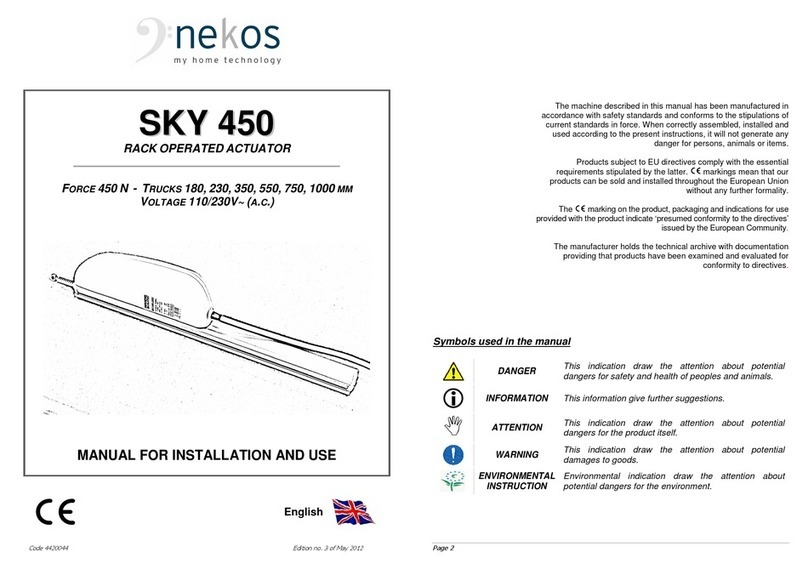
nekos
nekos SKY 450 Quick start guide
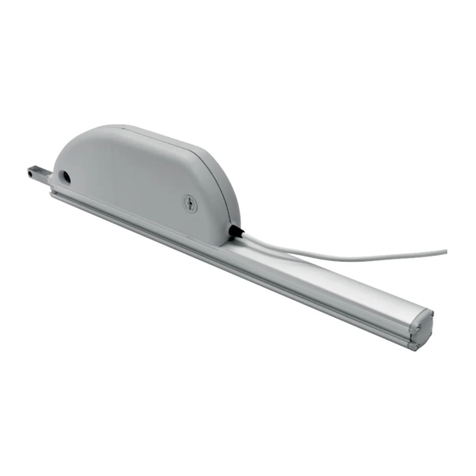
nekos
nekos SKYRO 650 User manual
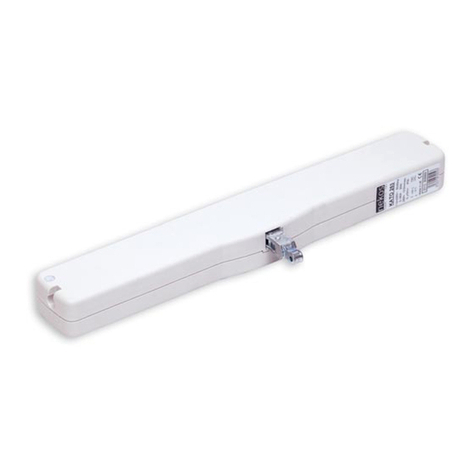
nekos
nekos KATO 253 Reference manual
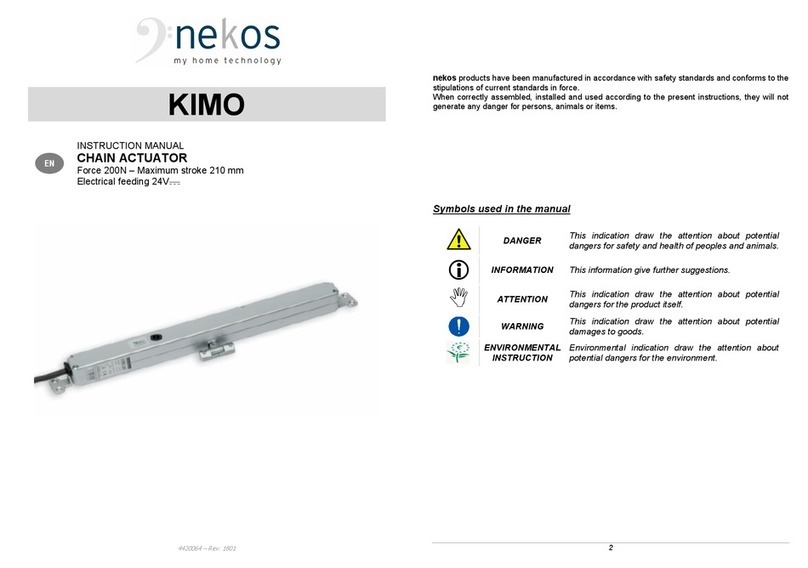
nekos
nekos KIMO User manual
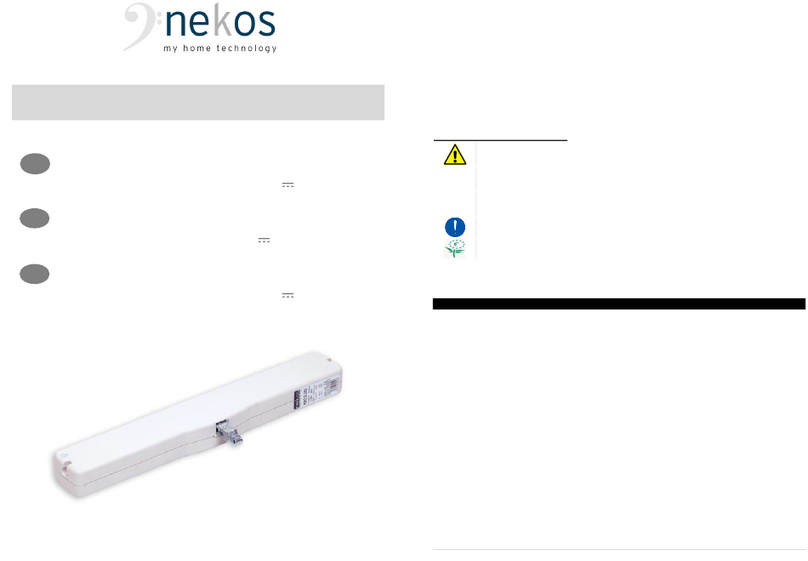
nekos
nekos KATO 253 User manual

nekos
nekos INKA 356 Series User manual
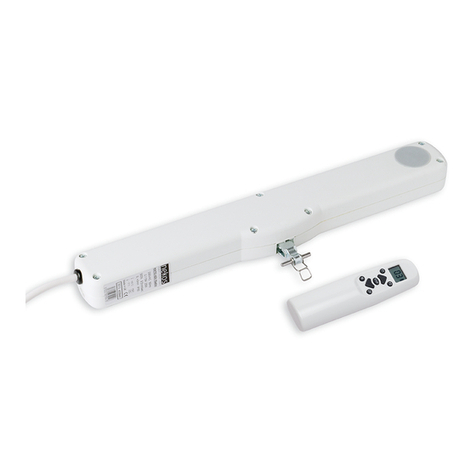
nekos
nekos KATO ADV RADIO User manual
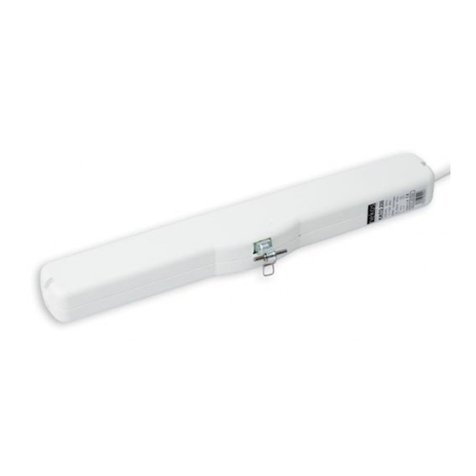
nekos
nekos KATO RADIO 230V User manual
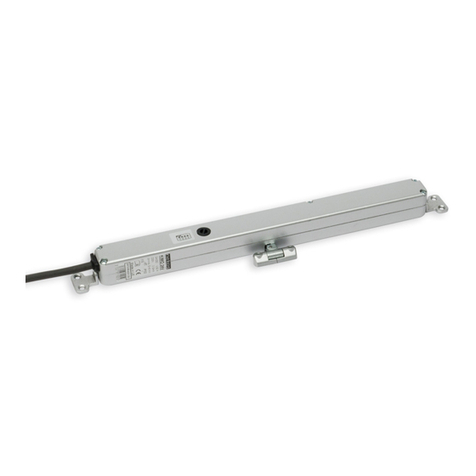
nekos
nekos KIMO 24V User manual
Popular Controllers manuals by other brands
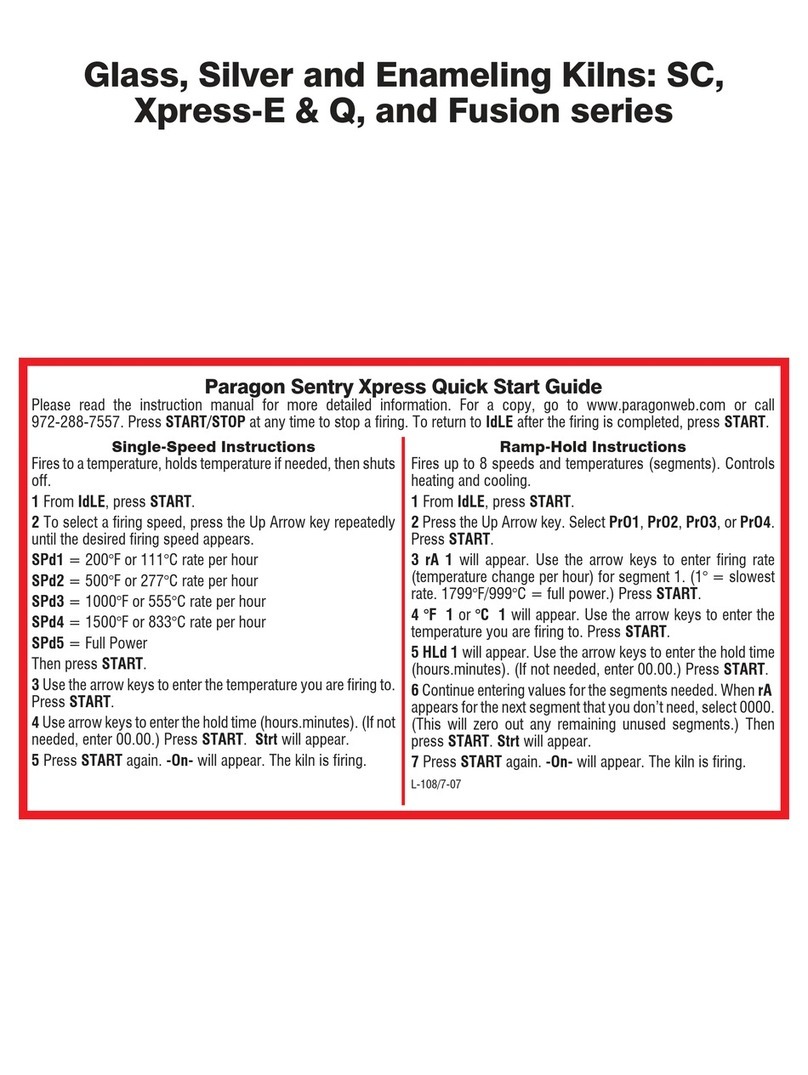
Paragon
Paragon Sentry Xpress SC Series quick start guide
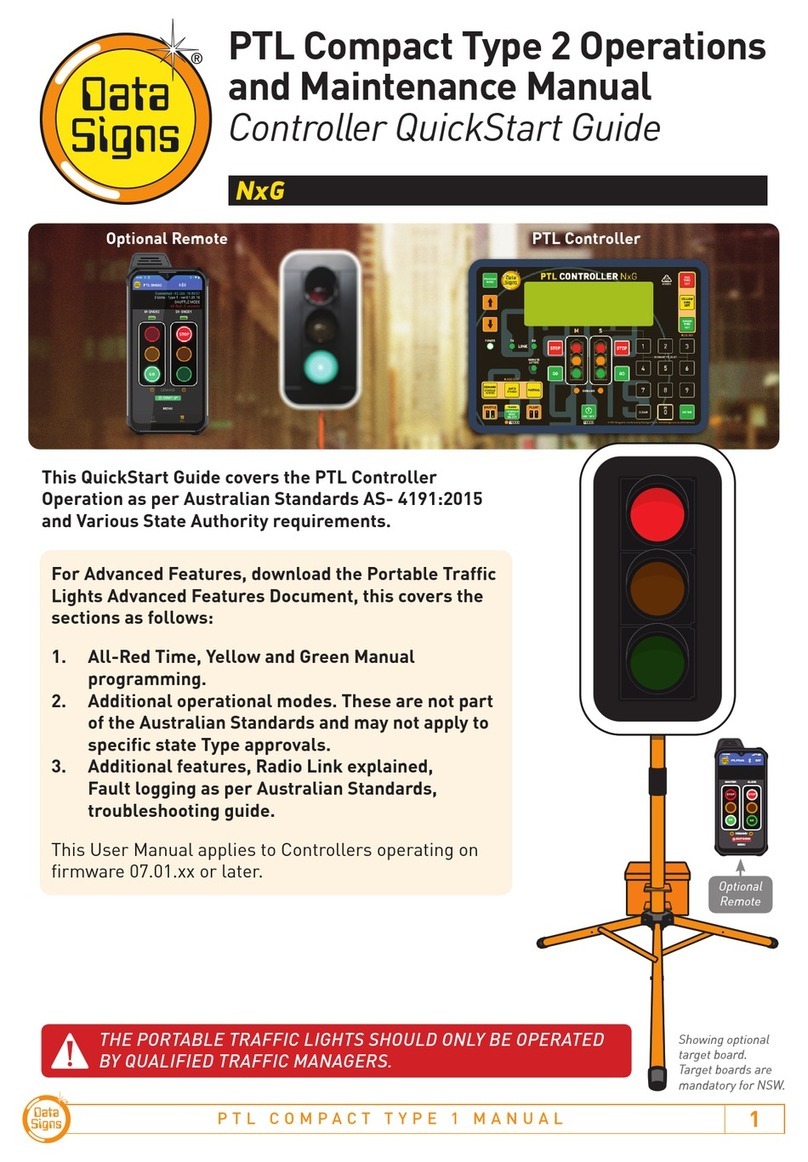
Data Signs
Data Signs PTL Compact 2 Operation and maintenance manual
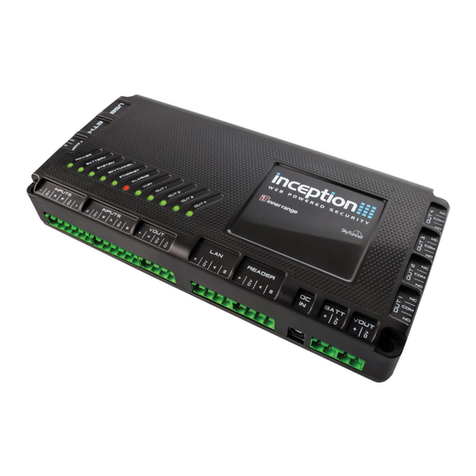
Inner Range
Inner Range inception installation manual
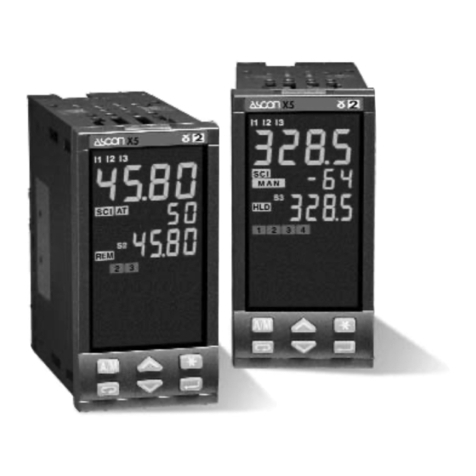
Spirax Sarco
Spirax Sarco X5 user manual

Woodward
Woodward EPG 512 Installation and Control Choices
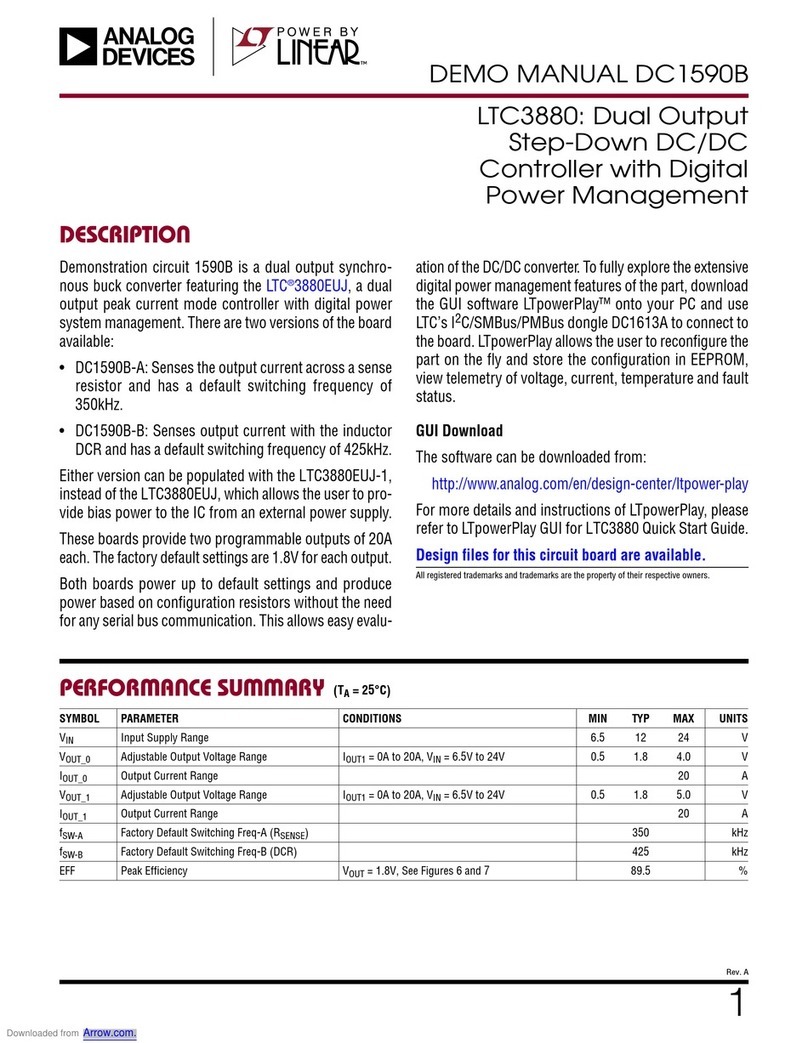
Linear
Linear ANALOG DEVICES DC1590B Demo Manual
